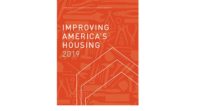U.S. Homebuilding Points to Growth in 2020

On a national level, most economists agree that construction starts, prices and sales for residential homes will continue to rise through 2020. According to the National Association of Homebuilders (NAHB), total housing starts of both single-family and multi-family housing are expected to increase through 2021 and beyond. The organization predicts growth from 1.24 million starts in 2019 to 1.29 million for 2020 to 1.32 million in 2021. NAHB predicts new and existing home sales to continue will rise through 2021 as well.
Trends driving some of the growth are demand for affordable or first-time homes, multi-family and urban centers. Along with housing starts and sales, prices — which have been rising due to low inventory in many markets — will continue to rise over the next nine months by 5 percent, according to S&P CoreLogic.
While Brian Strawberry, senior economist at the Fails Management Institute (FMI), Raleigh, N.C., told SDM there are certainly risks for a negative growth rate in the next year, his company is not forecasting that right now. “Most of what I am seeing is the trend toward mixed-use, multi-family construction with growth based on generational buyer trends, job growth and a trend toward urbanization. These are leading to an increase in multi-family [construction] starts in downtown markets.” He added that generational buyers (both millennials and baby boomers) are looking for multi-use buildings to fulfill their lifestyle needs.
Strawberry said that, according to his data, while construction starts for single-family homes are still not where they were before the recession, multi-family home starts are above the 1990s and early 2000s numbers. “I would say that trend is not going away and I would expect long-term demand for four or five years,” he added.
However, the Home Buying Institute stresses that local real estate conditions are quite variable right now. “We might say the housing market in general will continue to rise in 2020. But when you drill down to the city level, the outlook is more mixed,” wrote Brandon Cornett of the organization.
John Piroli, vice president, residential business at Guardian Protection, Warrendale, Pa., said the company is seeing relatively flat growth in mid-range-priced new construction, but strong demand for entry-level homes as well as increased interest in active senior communities “with an emphasis on the ‘aging in place’ or ‘aging with grace’ focus for those who want to downsize and live an easier, safer and simpler lifestyle as they enjoy their later years.” While Piroli told SDM the growth is mostly across the board in Guardian Protection’s territories where it does new construction business, he added “our Midwest markets haven’t seen an increase compared to the Southeast and Texas markets, but at the same time, haven’t shown a decline either.”
Robert Gaulden, director of technology alliances, multi-family at Allegion of Carmel, Ind., told SDM that he is seeing “especially strong growth in tech sectors and high-growth cities such as Phoenix, Orlando, the Mountain states, and through Texas and the Mid-Atlantic regions.”
Gaulden added that part of the growth can be attributed to employment and population growth, low interest rates, low vacancy housing rates, and relatively low rates of housing supply versus demand.
“We aren’t seeing slowdowns in new homes in any of our markets in the Rocky Mountain region where we are located,” shared Eric Garner, CEO and president of Mountain Alarm, Lakewood, Colo. “It looks like the next 12 months will continue to be robust and I am expecting growth in new construction.” While Garner told SDM he is seeing most of the growth in single-family homes right now, there are a lot of multi-family projects being built in their area and his company is working to get into more of those projects.
PwC Canada said that both senior housing and mid-priced, multi-family apartments are two of the “best bets” in terms of growth for 2020. According to Harvard’s Joint Center for Housing Studies, the number of Americans over 80 will go from six to 12 million over the next 20 years and economists expect an influx of this age group to look for a wide variety of housing options. “Everyone talks about millennial buying trends, but we are also seeing developers cater to that baby boomer profile, as well, as they want to have that urbanized or community lifestyle experience, too,” said Gaulden of Allegion.
Looking for a reprint of this article?
From high-res PDFs to custom plaques, order your copy today!






